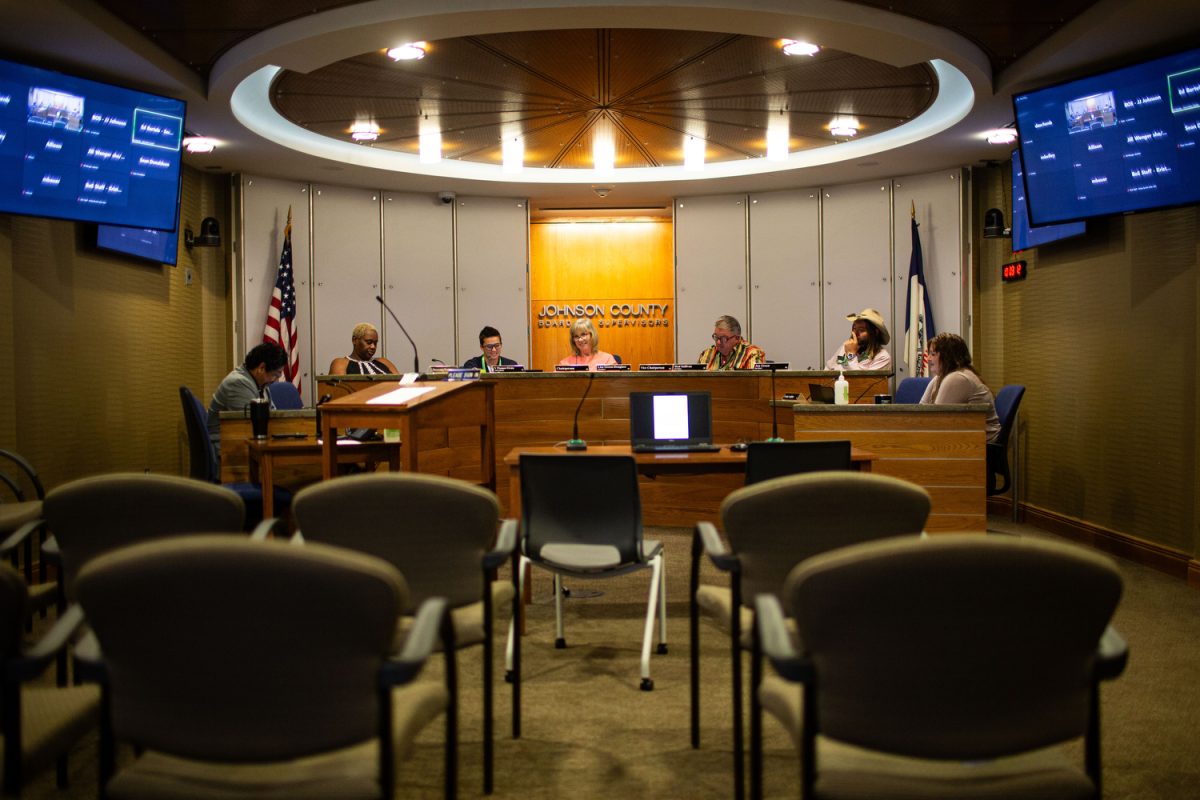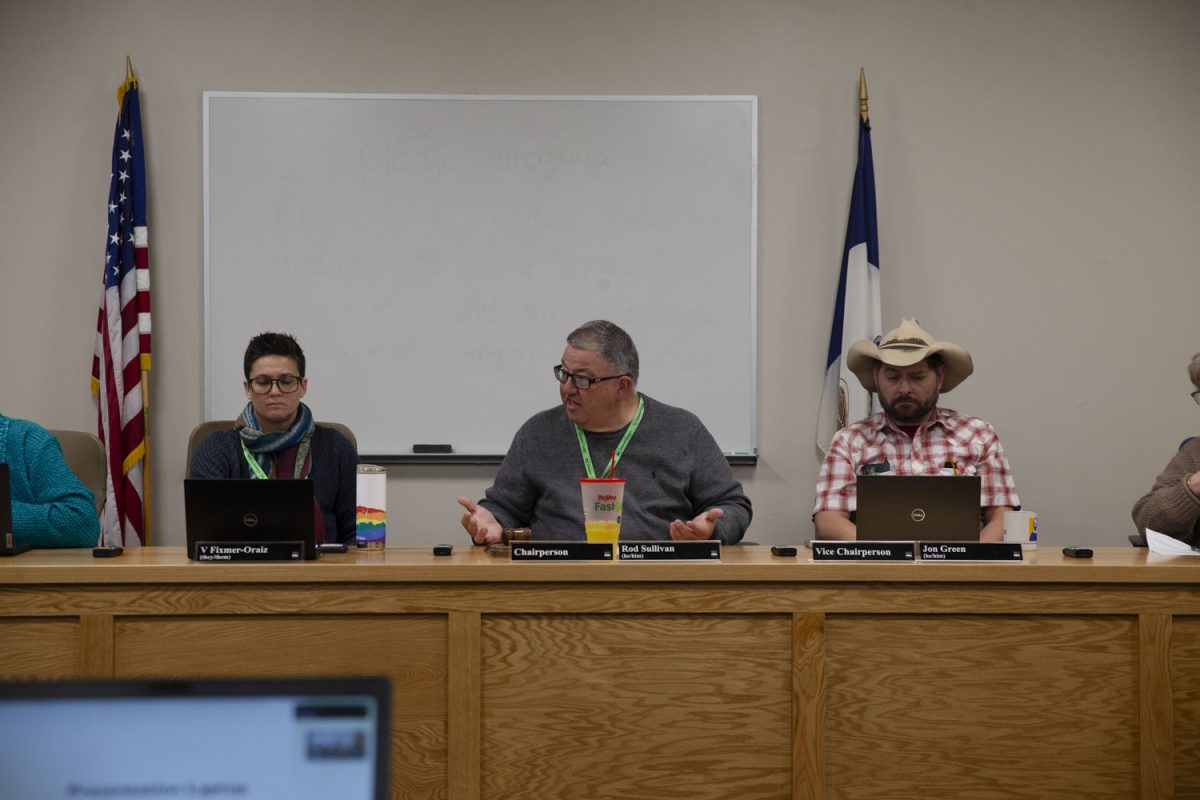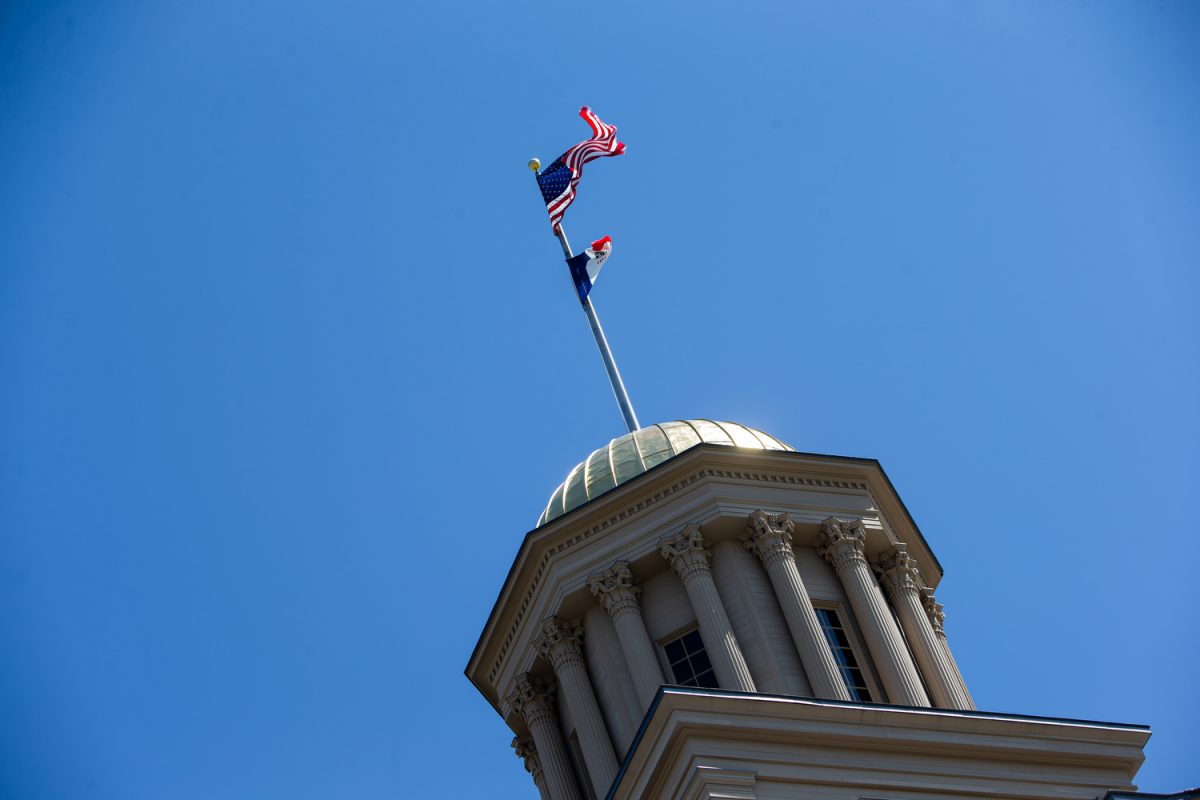Red "blood" poured on the IMU steps. Barbie dolls burned in a barrel. "Dr. Death" walked through town in a black robe, carrying a scythe. People dressed in ski masks threw bricks at cars behind Hillcrest.
In the 1960s and early 1970s, thousands of students united on campus to protest the war in Vietnam as it escalated.
While the ongoing Occupy Iowa City movement brings images to mind of a peaceful tent city in College Green Park, protests from 40-some years ago during the Vietnam War were not always so pacifistic.
Willard "Sandy" Boyd, a UI professor of law and president emeritus, was president of the University of Iowa during a time when he said antiwar protests were "serious business" and "more than just rowdy, they were dangerous."
"It wasn’t just a bunch of people whooping it up," he said. "These people were very serious-minded."
"My job was to keep the school open for people who wanted to protest and protest peacefully," Boyd said. "Closing the university was not an option."
Boyd recalled one particular demonstration when protesters were throwing bricks behind Hillcrest at cars below.
Boyd’s assistant at the time, Bob Engle, professor emeritus of education and formerly assistant to president, said he recalled the same event.
"There were a half a dozen people with ski masks on, throwing stones and bricks on the street," Engle said.
And while both Engle and Boyd said they respected peaceful demonstrations — because people have a right to express their opinions — they would not tolerate violence.
"I strongly believed in peaceful demonstrations but had to draw the line," Boyd said about the brick throwing.
Though Boyd said UI officials allowed thousands of students to gather on the Pentacrest to protest the war and march around campus — the occasional damaging of storefronts crossed that line.
But sometimes protesters won.
Engle said he recalled a group of students interrupting ROTC drills in 1970. Though Engle encouraged them to leave, they wouldn’t budge.
The students’ goal was to make the ROTC leave and gain the satisfaction of "shutting down the military" during the Vietnam War — leading to a standoff.
ROTC eventually left the location of the demonstration, and the student protesters claimed their victory, though Engle said the movement was not effective in the big scheme of things.
When the CIA came to recruit students in the early 1970s, Engle said, students occupied the stairs inside the east side of the IMU, preventing officials from entering the job offices.
"You had to step over bodies, it was just packed," Engle said. "They were determined not to leave."
Engle said he was involved in antiwar protests himself, but he said he conducted himself in a way that was peaceful and didn’t disrupt people’s lives.
"There was a mix of citizens who stood down on Clinton Street and Washington Street to block each direction for a half an hour every Wednesday for three years," Engle said. "It wasn’t always pleasant; kids shot BB guns and spit on us."
But for teaching assistant Charles Aukema at that time — now a creative-writing professor at Coe College — one key point in the Vietnam protests was the burning of "Big Pink," a temporary building next to the Old Armory.
Before catching fire in the early morning hours of May 9, 1970, Big Pink contained the Rhetoric Department and the writing lab; and located roughly where the Adler Journalism Building stands. It burned approximately a day after around 230 protesters were arrested on the Pentacrest, capping nearly a week of protests that began after four Kent State antiwar protesters were killed by the Ohio National Guard on May 4, 1970.
Aukema said he lost half of a handwritten novel in the fire, which took place when he was a student in the Writers’ Workshop.
Though rumors circled that antiwar protesters were responsible, the cause of the fire that burnt down Big Pink is still disputed. The state fire marshal at the time ruled that the blaze was caused by bad electrical wiring.
And even though Boyd wanted to keep classes in session, after fire, he gave students the option of leaving.
"There was so much hysteria and so many rumors that I gave the students an option to go home if they wanted to," Boyd said.
Students had the choice of completing their work at a later date, accepting a "pass" or withdraw grade, or accepting a grade based on the work completed through May 3.
When the U.S. military in the ’60s began using napalm — a chemical manufactured by the Dow Chemical Co. — for incendiary bombing in the Vietnam War, Aukema said, he remembered a UI student who was referred to as "Dr. Death."
"Dr. Death carried a scythe with an American flag and had a cloak with a hood all in black," Aukema said, describing his memory from 1967. "He carried a great big barrel and would burn plastic dolls."
The large barrel would overflow with flames as dolls burned inside.
Aukema said his attire was a "wonderfully created image" of how people felt about the Vietnam War.
And, he said, the grueling images persisted, when students sparked another protest against the war later that year when they poured "blood" on the IMU steps.
"It was probably cranberry juice mixed with ketchup, but who knows?" he said.
Aukema said the war in Vietnam was "seriously unpopular" and every day was a protest day.
As Occupy Iowa City has occurred in the past few weeks, Aukema — who lives across from College Green Park — said they are "very law-abiding," but the protests today are not the same as they were back then.
Aukema said demonstrators during the Vietnam era were protesting very specific issues, and today, the protests cover broad topics.
And Boyd agreed.
"There has been nothing like [the Vietnam War protests] in my lifetime, and I was born in 1927," Boyd said. "You don’t feel this directly in your life today as you did back then. Because back then, if you were a man, you were constantly worried about being drafted."






